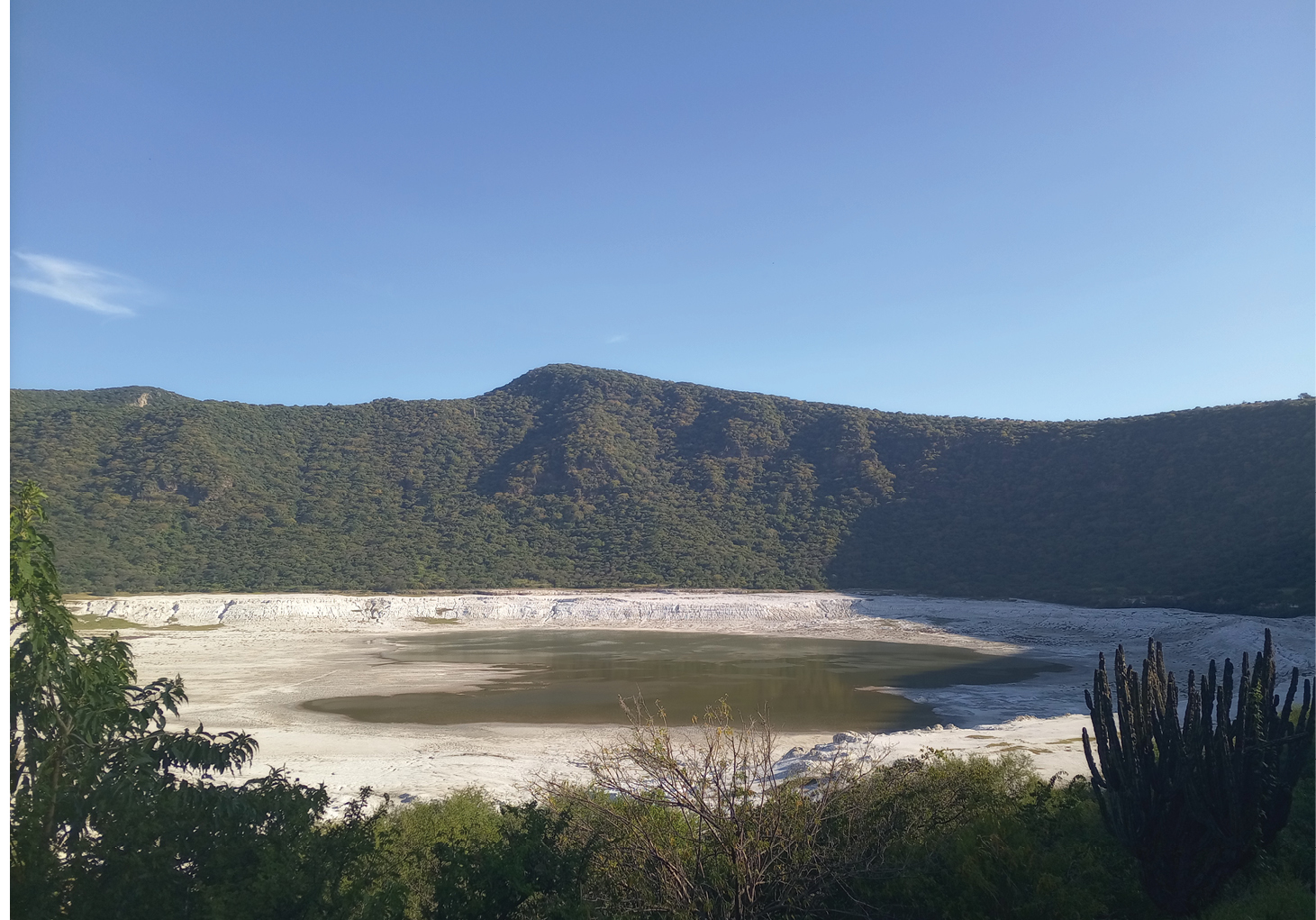- Home
- Publications
- PAGES Magazine
- Lake Sedimentary DNA Research: Extending The SedaDNA Network Across Latin America
Lake sedimentary DNA research: Extending the sedaDNA network across Latin America
Marcos E. Echeverría and Bárbara Moguel
Past Global Changes Magazine
31(1)
35
2023
Collaboration between Dr. Echeverría and Dr. Moguel was carried out with the support of the PAGES-IAI International Mobility Research Fellowship Program during August and September 2022. This project allowed Dr. Echeverría to explore new insights into ancient DNA (aDNA) and sedimentary DNA (sedaDNA) analysis, supervised by Dr. Moguel, who has extensive experience in exploring sedaDNA and working in metagenomic studies at UNAM-Juriquilla, México.
Overall process
Paleoecological studies in Latin America provide information about changes in vegetation and climate during the late Quaternary. Analysis of aDNA is a field that is rapidly expanding as a new technique to reconstruct past and modern environments (Capo et al. 2021; Parducci et al. 2018).
Rincón de Parangueo is a crater lake located in the Valle de Santiago volcanic field, central México (Fig. 1). The water level increases during the rainy season and it greatly reduces during the dry season, making this area an example of a fast and drastic transformation environment. Also, Rincón de Parangueo consists of native vegetation and constitutes one of the few natural areas of deciduous tropical forest in central México.
 |
|
Figure 1: Rincón de Parangueo crater lake has been exposed to exploitation as a hydric resource by residents of the region over the last 40 years, leading to a gradual drying of the lake. |
In this context, this site represents an ideal setting to study the microbiota biodiversity in the area through sedaDNA metagenomic analysis, and to reconstruct past environmental changes. We recovered a 964-cm-long sequence using a Livingstone corer from the Rincón de Parangueo lake. During the fieldwork, emphasis was placed on minimizing sample contamination, because it is critical for performing adequate DNA extraction and analysis. DNA samples were processed in the International Laboratory for Human Genome Research (LIIGH-UNAM-Juriquilla, México). DNA was extracted from 0.25 g sediment samples using the PowerSoil® DNA Isolation kit from QIAGEN, following the manufacturer’s protocol. An additional Proteinase K solution (400 μL, 2 mg/mL) per sample was added to complement the lysis process following Epp et al. (2019) modification protocol.
After the DNA extraction was made, the samples were purified using OneStep™ PCR Inhibitor Removal Kit to remove impurities from the samples. For the construction of the genomic libraries we used the NEBNext DNA Library Prep Master Mix Set (New England BioLabs) following the manufacturer’s protocol. DNA quantity was estimated using Qubit fluorometric equipment. After the genomic libraries construction, a qPCR was performed. The data obtained from the DNA extraction and metagenomic analysis from the Rincón de Parangueo sediment core will compliment the sedimentological and geochemical information available for this area, and, therefore, will allow us to carry out a more accurate environmental reconstruction, in terms of regional climate change.
Furthermore, Dr. Echeverría gave a seminar at CGEO-UNAM to talk about the collaboration with Dr. Moguel, and to discuss possible future project initiatives involving sedaDNA in Latin America. After this, there was an opportunity to discuss the outline of a whitepaper on South American sedaDNA paleoecology and future projects on the same topic. In particular, this future cooperation will focus on performing sedaDNA analysis to determine the times of colonization and expansion of the south Patagonia Argentina forest after the deglaciation. These results will be combined and interpreted together with pollen records made by Dr. Echeverría. These data will help to determine which tree species were the first ones to expand after the glacial retreat, and also if some of these species may have survived in refugia during cold stages.
Conclusion
The PAGES-IAI Fellowship was a unique opportunity to establish an international sedaDNA network between Latin American countries, promoting new sedaDNA projects between México and Argentina. Also, the PAGES-IAI Fellowship enabled the planning of a joint future project in Patagonia, Argentina, where the sedaDNA analysis will play a key role.
Today, Latin American researchers are still largely underrepresented in the sedaDNA research community. For this reason, the PAGES-IAI International Mobility Research Fellowship Program represented a great opportunity to increase the number of sedaDNA projects in Latin America and to empower local researchers to play a central role in lake sedaDNA research in the near future.
affiliations
1Instituto de Investigaciones Marinas y Costeras, Universidad Nacional de Mar del Plata, Argentina
2Centro de Geociencias Center, Universidad Autónoma de México - Campus Juriquilla, México
3Laboratorio Internacional de Investigación sobre el Genoma Humano, Universidad Autónoma de México - Campus Juriquilla, Mxico
contact
Marcos E. Echeverría: echeverriamarcos mdp.edu.ar (echeverriamarcos[at]mdp[dot]edu[dot]ar)
mdp.edu.ar (echeverriamarcos[at]mdp[dot]edu[dot]ar)
references